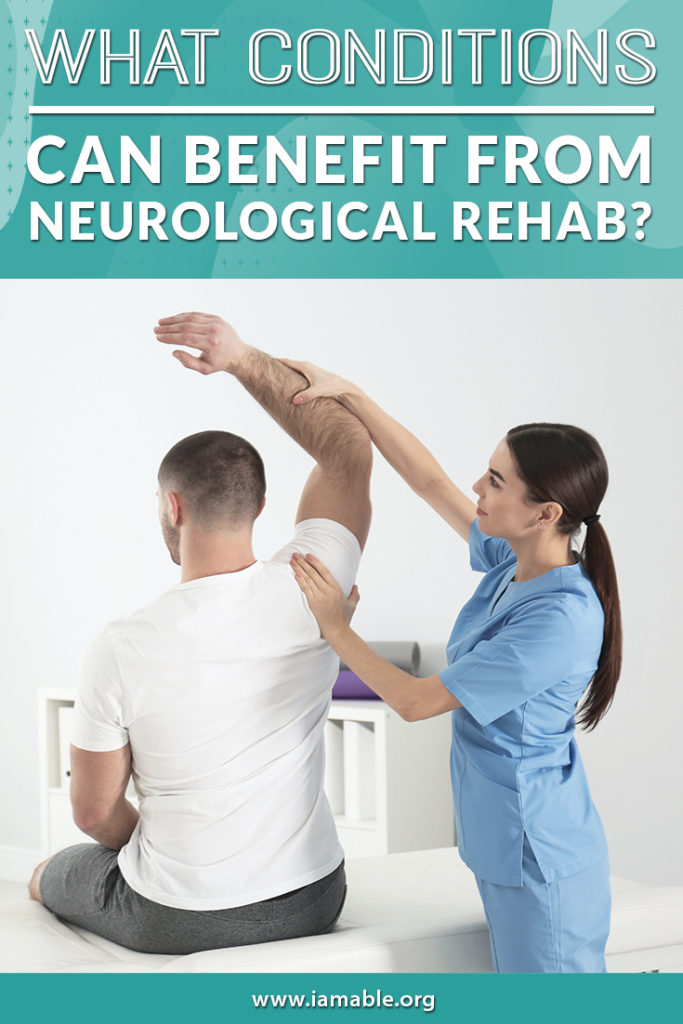Miami, FL 33186

A neurological rehabilitation center can help someone who is living with the effects of a neurological condition. We are going to take a closer look at neurological conditions and a number of their causes. In particular, we will address how a neurological rehabilitation center may help your health to improve if you are living with any of these specific conditions. But first, we should discuss what neurological rehab is and the goal of this type of treatment.
Neurological rehabilitation is a program that treats patients with a disorder of the central nervous system. These disorders can result from an illness or a traumatic injury that affects the brain or spinal cord. The purpose of the rehabilitation is to reduce the symptoms that a patient is experiencing. This can improve quality of life and increase the amount of independence a patient can retain. Another goal is to help restore function whenever possible.
With this in mind, let’s start looking at some of the conditions and illnesses that may result in the need for neurological rehab.
Stroke tends to strike out of the blue. A clot blocks a portion of the brain from receiving oxygen. Without oxygen, those brain cells begin to die. Depending on the parts of the brain that die, varying symptoms can arise, including memory loss, inhibited muscle control, paralysis, speech difficulty, and more.
A massive stroke can lead to extensive ongoing symptoms. While a limited number of people can completely recover after a stroke, about two-thirds of patients will have continuing disabilities. This is why neurological rehabilitation is vital. The right neurological rehabilitation center may be able to help restore some function and increase the degree of independence that you can retain.
An SCI (spinal cord injury) or TBI (traumatic brain injury) can leave a patient with many ongoing neurological symptoms, including paralysis. Whether the damage occurs in the brain or the spinal cord, the function of the central nervous system experiences changes. With an SCI, the effects involve paralysis from the site of the injury and lower. When a TBI happens, the extent of the symptoms relates to the location and severity of the damage.
Either way, a modern neurological rehabilitation center should offer unique recovery paths that meet your individual situation. From activity-based therapy to FES (functional electrical stimulation) to gait therapy with a Lokomat, there are many ways to help the nervous system rewire. This allows you to maximize your recovery of function. Combined with occupational therapy, you can optimize the amount of independence that you can maintain.
Cerebral palsy is actually a group of neurological conditions with a similar series of symptoms. These include issues with balance, muscle coordination, and body movements. This is because the condition impacts that part of the brain that controls body movements. While most patients are born with cerebral palsy, a small number experience traumatic events that lead to the condition. The good news is that cerebral palsy is not a degenerative condition, which means that symptoms do not grow worse on their own. However, intervention can help improve symptoms, restore a more natural gait, or just make the condition a little easier to live with.
There are many other neurological conditions that may cause symptoms that a neurological rehabilitation center will help treat. Here are a few examples:
In addition to these conditions, a patient may also experience benefits from neurological rehab if you are living with spina bifida, transverse myelitis, central cord syndrome, or muscular dystrophy.
There are several essential factors if you want to receive the best outcome possible. One is to choose the right outpatient facility for your rehabilitation. You want to be sure they have experience with the specific trauma or illness you are dealing with. The other most critical factor is your outlook. That is why iAM ABLE is proud to offer our eBook, 7 Unbelievably Important Steps to Take to Thrive After Paralysis. It is designed to help you get your mindset ready for the recovery journey. Download it today to get started.
Grab our free e-book 7 Unbelievably Important Steps to Take to THRIVE after Paralysis by clicking the image below.
